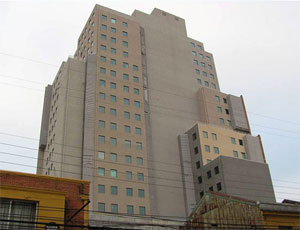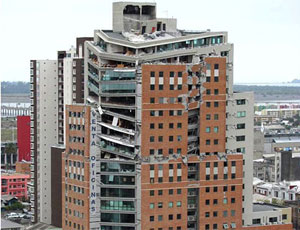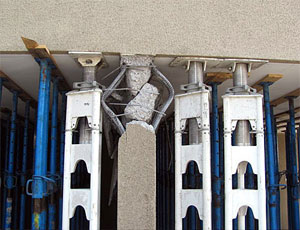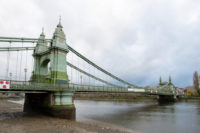Valuable lessons can be learned and possibly applied to modify U.S. seismic design codes and practices from the behavior of structures during the magnitude-8.8 earthquake that rocked Chile on Feb. 27, said the leader of a team representing the Structural Engineering Institute of the American Society of Civil Engineers, which visited Chile from April 5-12. In April, ASCE also sent assessment teams from its Coasts, Oceans, Ports and Rivers Institute (COPRI) and its Technical Council on Lifeline Earthquake Engineering (TCLEE).



More study of the details of the failure modes of reinforced concrete shear-wall buildings may be warranted as well as the study of the details of structural and non-structural drift on overall performance, said John D. Hooper, director of earthquake engineering for Magnusson Klemencic Associates, Seattle, and the leader of SEI’s team of 16 engineers. Engineers hope to study overturning in “T” walls in lower levels and confinement of thin walls, he said.
Seismic design of Chile’s large inventory of reinforced concrete shear-wall buildings is generally similar to practices in the U.S., except for confinement of concrete and ground-motion spectra. “We need to learn about the differences” to apply lessons learned from Chilean buildings to U.S. seismic design practice, Hooper said, speaking at the 2010 Structures Congress, held on May 12-15 in Orlando.
The quake killed more than 340 people, displaced 800,000 and caused an estimated $30- billion worth of damage. It was centered off the west coast of Chile, more than 60 miles north of Concepción and just over 250 miles southwest of Santiago.
The team looked at steel, concrete, masonry and wood frames; non-building structures, including industrial facilities; and non-structural components of both building and non-building structures. Hooper said the strong and long ground shaking, characteristic of the Chile quake, is similar to the kind of shaking expected in the U.S. Pacific Northwest and Alaska. He suggested those regions might benefit from different performance criteria than California has.
From 1985—after the last big quake in Chile—through 2009, Chile issued 9,974 permits for buildings three stories or taller in the quake-affected areas. Of these, 1,939 are taller than nine stories, said Hooper.
Hooper confirmed earlier reports that buildings generally fared well in the Feb. 27 quake: Only four buildings collapsed, and an estimated 50 are going to be demolished. “They were taking down buildings we thought we could repair,” said Hooper.
Only 0.5% of buildings three stories or taller failed; only 2.8% of buildings nine stories or taller failed. In the U.S., the expectation is that 10% would collapse in a similar quake, he said.
Hooper reported that life is almost back to normal in the places visited, which included Concepción, Santiago, Talca, Vina Del Mar and Valparaiso. The buildings that were damaged showed much the same condition: buckled columns near the base, many in basement- or ground-level parking areas under the buildings, mostly caused by lack of confinement of the concrete. A more spectacular failure occurred in the Torre O’Higgins Office Building in Concepción. There, one side of the building is not at all damaged, but the opposite side is, likely due to torsional repsonse at the setback or perhaps an occupant’s removal of interior walls.
In Concepción and surrounding coastal areas from April 10-17, ASCE’s seven-member team from COPRI issued a May 3 report recommending Chile develop a comprehensive port design code, including requirements for port evacuation following a major quake. The team also advises the creation of a nationally funded tide-gauge program, which can record the high water levels associated with tsunamis. Another suggestion is for the creation of a nationally funded seismic monitoring program, using digital instrumentation. The program could be modeled after the California Strong Motion Instrumentation Program, say the engineers.
Chile needs a tsunami plan for specific port/harbor areas and an accurate tsunami warning system that can inform the local population, as well as visitors, says COPRI. The nation needs to relocate critical infrastructure out of potential tsunami flood zones. Foundations in flood zones should be designed for scour, and there should be flow-through structures in tsunami zones, advises the report.
The TCLEE team, in Santiago and Concepción from April 8-17, examined the performance of infrastructure, such as water and wastewater, transportation, electric power, seaports and airports, telecommunications, liquid fuel and gas, and schools and hospitals. Its report is not out yet.



Post a comment to this article
Report Abusive Comment